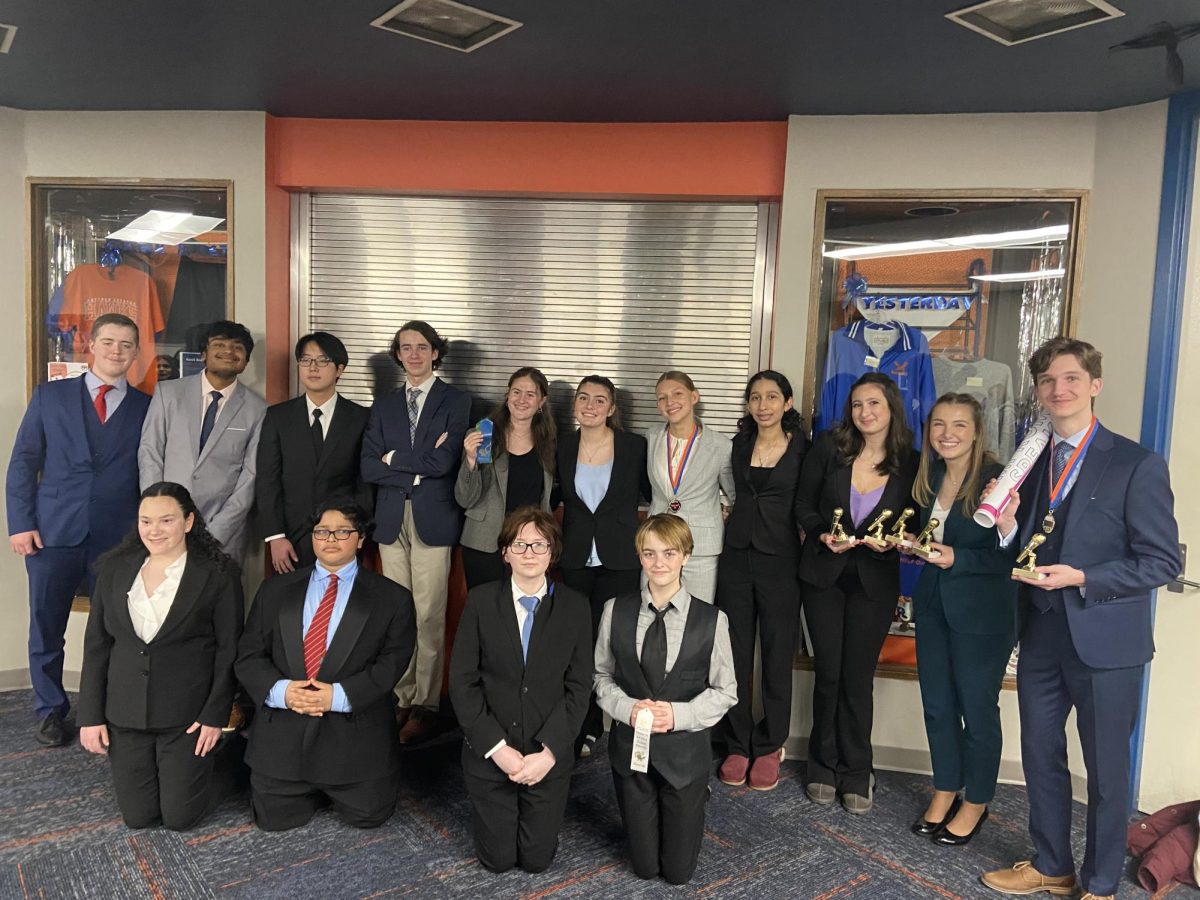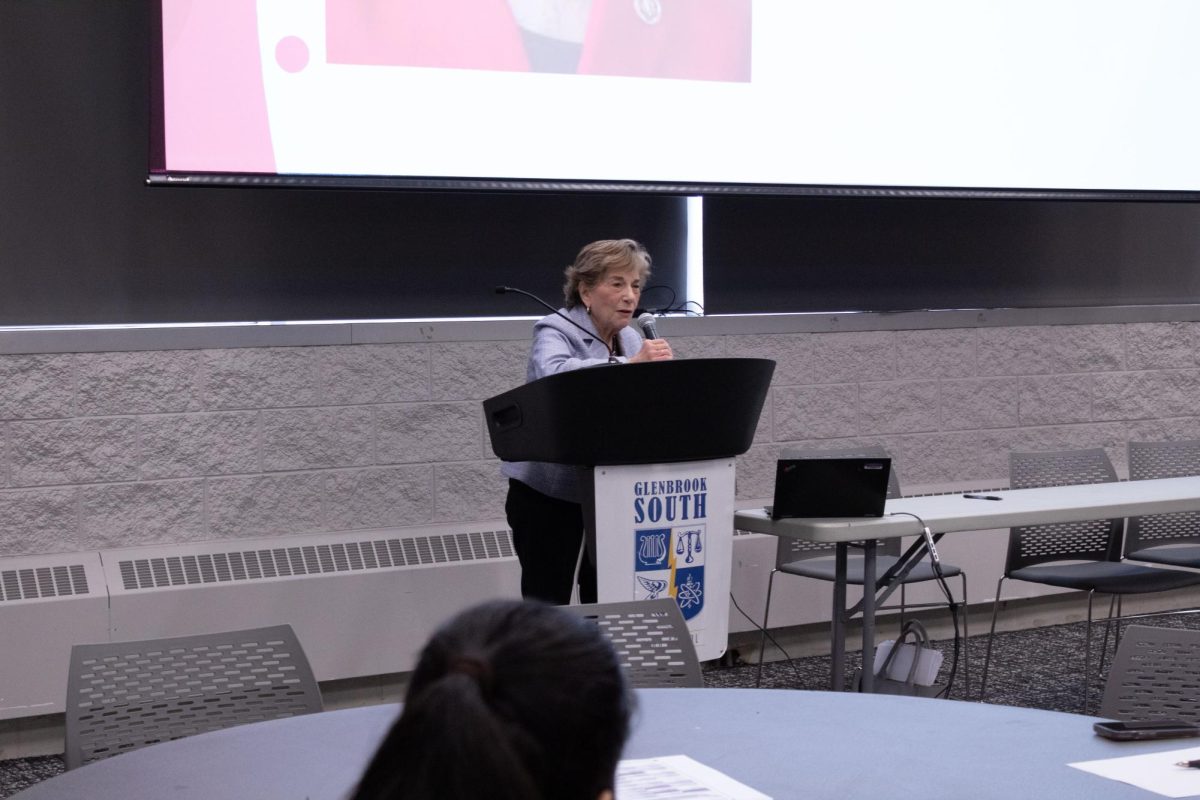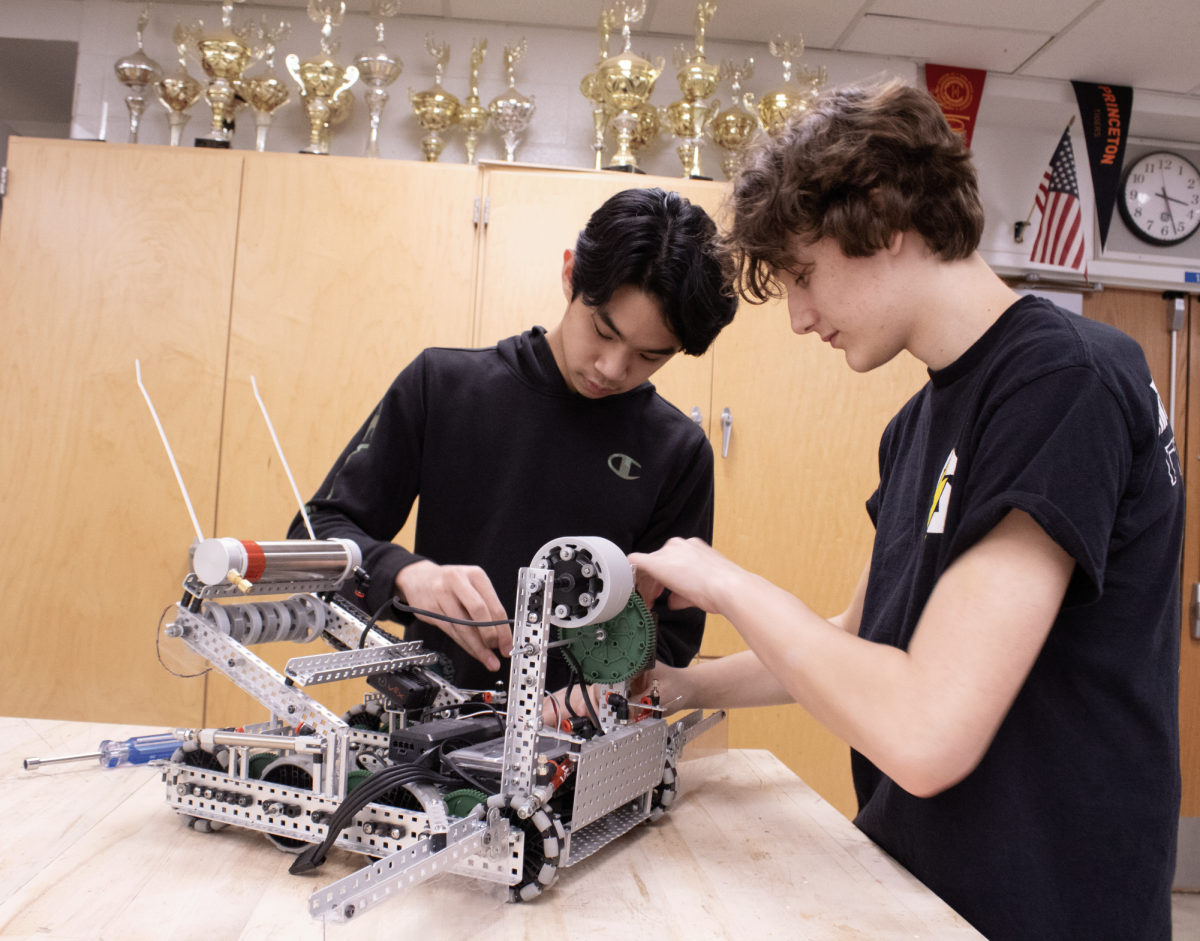District 225 Board of Education voted to lay down turf on South and North foot- ball fields at the Dec. 12 Board meeting, a $3.5 million project that has been dis- cussed for five years.
According to a memo written by Kimberly Ptak, District 225 director of operations and purchasing, an estimated 130 students per school benefit from the natural grass currently on the football fields, including football, soccer and lacrosse players. Steve Rockrohr, South athletic di- rector, believes any more use of the cur- rent field would destroy it, so organizations like marching band, field hockey and physical education have limited access.
“We beat up our practice fields quite a bit,” John Catalano, North athletic director, said. “They’re on them every single day, a couple of hours a day and yes, they do take a beating so that by the end of the season or sometimes sooner, they’re in very poor shape.”
Band director Greg Wojcik notes that the marching band wears out the field even faster than football teams because their movement is repeatedly focused on the same area. This forces the marching band to practice on the parking lot.
“Let’s look at the districts around us [who have turf],” Wojcik said. “Niles West, Niles North [have it]. When [marching band] goes out [to compete], maybe one contest will be on turf. It’s all of them now. All of the districts are [putting in turf]. They feel that the maintenance of the field and the usage outweigh the cost.”
Turf maintenance costs $35,000 per year and is a minor expenditure in the scope of the District’s $95 million budget, according to Board President Skip Shein. Although Shein recognizes that some believe a turf field is a nonessential, he believes the District can afford it because of how conservatively they spend money, demonstrated by the fact that the District budget increased only 1 percent last year.
“I think it’s difficult for some people to think right now that [the District] ought to be doing anything with athletic fields, but when you look at how little we use the athletic fields the way they are now, we spend more time trying to keep people off them than putting people on them,” Superintendent Michael Riggle said.
In the memo written by Ptak, the funding for turf will come from: $250,000 from each school’s Athletic Booster club, $500,000 from each school’s small building project funds, $900,000 from Capital Reserve, $1.2 mil- lion from the remaining Build America bond funds and $400,000 in community donations.
According to Riggle, the cost of two new stadium tracks are included in these funds, but because South’s track is not set to be replaced until 2017, it will try to be salvaged. In the memo, the estimate for South’s new track is $225,000 and $390,000 for North’s, which is set to be renovated in 2013 regardless of the turf project. “We believe that there are people who want to make donations, but they want to make them sort of anonymously,” Shein said. “There are people who want to do stuff like that who don’t want to get involved with the [Athletic Booster clubs]. They love the school, they love the community and they’re willing to make donations.”
The original timeline for the project was conservative, waiting until Sept. 1, 2012 to allocate funds. The District was then planning to put the project up for bid for companies like Spor-tex, Astroturf, Mondo and Turffield Revolution in January 2013, according to Riggle.
Riggle notes that on that timeline, the District would not need the Sept. 1 fund- raising deadline, pushing South construction to spring 2012.
Construction would occur at both schools in spring of 2013.
However, Riggle added that a number of board members, like Joel Taub, recommended a more aggressive approach.
To make this possible, Taub suggests that $400,000 in com- munity donations be initially paid with District operational reserves to be paid back over time.
Riggle notes that on that timeline, the District would not need the Sept. 1 fund- raising deadline, pushing South construc-tion to spring 2012.
According to Riggle, North construction would remain in 2013 because North has yet to obtain a permit from the Metropol-itan War Reclamation District for putting in a $350,000 water drainage system necessary for the field.
In light of the United States’ current economic crisis, Taub believes taxpayers should not be asked for a $400,000 donation at all when the District has $62 million in operational reserves.
However, Riggle explained that the District was originally hesitant to spend operational reserves because they are set aside to provide a financial safety cushion during the up- coming growth in enrollment that could strain the budget.
“It’s not like we’re rushing to judgment,” Taub said. “First [the District] had arguments five years ago that they didn’t know if the turf was safe, they didn’t know if it was a cancer risk. […] So now all of the excuses are out of the way. They know how much it costs. They know that it’s safe. And they know it’s economical.”







